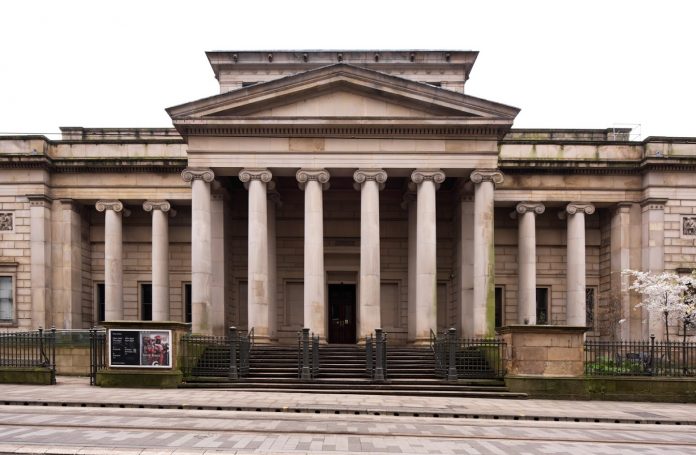41 places across England that were at the centre of suffragette action, from mass meetings and smashed windows to prison hunger strikes and post box fires, are officially recognised today
Sites include The Free Trade Hall where the suffragette movement began and Manchester art gallery where suffragettes attacked paintings in protest.
These places are already listed buildings but until now there has been no record of their suffragette history on the National Heritage List for England.
These places are already listed buildings but until now there has been no record of their suffragette history on the National Heritage List for England.
100 years on from the first women in the country being granted the right to vote, women’s history is still under-represented in national records. Through its HerStories project, Historic England has been working with researchers from the University of Lincoln to address this imbalance and officially recognise suffragette stories that are told in bricks and mortar on The List.
Among the 41 places relisted today for the events they witnessed in the suffragettes’ campaign for the vote are Manchester’s Free Trade Hall, where the militant suffrage campaign began and Epsom racecourse, where the renowned suffragette Emily Wilding Davison was trampled by the King’s horse when she ran across the racecourse during the Derby.
Also officially recognised on The List are the sites of more unusual suffragette protests, from the school in Birmingham which so charmed a pair of suffragettes they left a note on a blackboard saying they couldn’t bear to set it on fire, to St George’s Hall in Liverpool where a suffragette hid in an organ loft for 24 hours so she could noisily disturb a speech by a local MP the next day.
Each site has an important story to tell in the fight for women’s rights.
The Manchester sites are:
Free Trade Hall, Manchester
The Free Trade Hall is where the British militant suffrage campaign began. The WSPU was formed in Manchester in October 1903 by Emmeline Pankhurst and a group of women from the local Independent Labour Party. For two years the Women’s Social and Political Union (WSPU) organised small meetings in and around Manchester and pressed the Independent Labour Party to honour its commitment to giving votes to women. The WSPU changed its tactics on 13 October 1905. Two of its young members, Christabel Pankhurst and Annie Kenney, went to a Liberal Party election meeting at the Free Trade Hall and hung a banner reading ‘Votes for Women’ over the balcony, demanding to know whether a Liberal government would give votes to women. After a scuffle they were ejected from the hall then arrested. They refused to pay a fine, so went to prison, starting nine years of militant direct action by women determined to get parliamentary votes.
The Hall stands on the site of the 1819 Peterloo massacre in which volunteer soldiers set upon crowds demanding political rights, a fact often invoked by suffragettes who saw themselves as part of a longer tradition of direct action. Suffragettes disrupted further Liberal meetings at the Free Trade Hall. As the WSPU grew in size it was able to fill the venue and held several large meetings there with speakers such as Mrs Pankhurst (December 1912). In April 1913, at the height of the WSPU’s campaign of violent militancy, a homemade bomb, thought to be the work of suffragettes, exploded under the stage of the Hall.
Manchester Art Gallery
Manchester Art Gallery was the site of the first attack on artworks by suffragettes. On 3 April 1913 Lillian Forrester, Annie Briggs and Evelyn Manesta were discovered smashing the glass of paintings in one of the galleries. 13 pictures by artists including Millais, Burne-Jones and Rossetti suffered damage estimated at over £100 in total. In court they explained that they were acting in protest at a recent prison sentence given to Mrs Pankhurst for her own suffragette militancy. The jury acquitted Briggs but convicted Forrester and Manesta. While in prison the women were photographed and their pictures circulated to art galleries across Britain to prevent further attacks. Despite this, other women followed their example and there were a spate of similar suffragette strikes on art galleries and museums the following year.
Other sites in the North West include Spinners Hall in Bolton where on the 5 July 1913 a package containing gunpowder was put through the letterbox of the Hall, but landed on a tiled floor where the fuse went out. A report of the incident was reprinted in the WSPU’s newspaper ‘The Suffragette’,suggesting that the Union took responsibility for the bomb
Sefton Park Palm House in Liverpool which was subject to an attack by militant suffragettes in November 1913.
The attack was one of a number of attempts to cause criminal damage in public parks nationally. A park keeper discovered a home-made bomb in the porch of the palm house; its fuses had been lit but had blown out in the wind. In keeping with the WSPU policy, the perpetrator was not formally identified, although it is likely to have been carried out by Kitty Marion, a self-confessed suffragette arsonist and bomber who had suffragette friends in Liverpool, and who pasted press cuttings relating to this attack in her scrap book.







